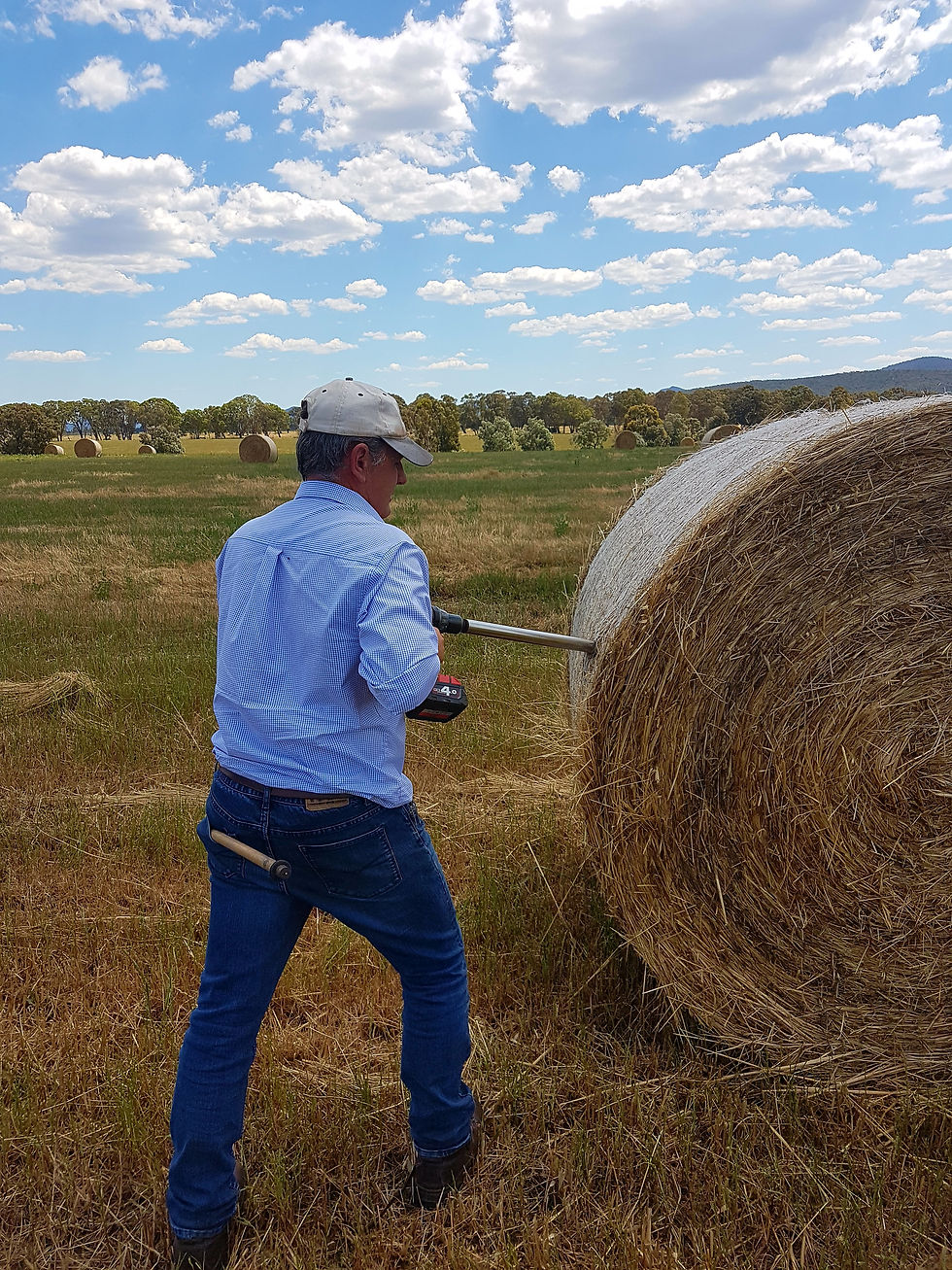MAXIMISING CONFINEMENT SUCCESSFULLY
- Rebecca Thorn

- Dec 23, 2020
- 3 min read
Updated: Apr 9, 2021
This year we had headed into harvest with strong yields and excellent rain to finish forage and grain, however for those regions that cut earlier, the rain did not stop. So far in 2020 there has been a mixture of some forage harvests that timed perfectly, but for a large majority there has been significant rain damage. This has resulted in leached nutrients, higher fibre content and a high risk of mould. The opportunities are still there, with lower feed costs and good livestock sale prices, targets are still very achievable with attention to detail.
There are two key areas of focus when looking at maximising efficiency of feed conversion in confinement. Quality of feed and stress.
Feed Quality
As previously mentioned, there are going to be some challenging feeds floating around this season. Through lab analysis, we have seen incredibly low energy and commonly high fibre percentage. This is because even if the forage was cut early, the rain can wash out the high energy soluble nutrients and therefore as a percentage, the fibre is now greater meaning less forage we can fit in their gut.
When setting out a summer feed budget, you will be required to identify the feed available, animals on hand, amount of supplementary feeding required and calculate how much purchased feed will need to be bought in. It will be important to get animals off the farm in the specified time for your goals. And it is also essential to check the quality of the forage. The difference of 10% NDF in a grain/hay diet over 500 ewes in 90 days is approximately 9.5t as fed of feed.
The hay may look good and smell good in the bale, but after rain the quality can be the complete opposite. Without a feed analysis and by setting up the same grain to forage mix as previous years, animals may end up with disappointing results and achieve low daily weight gains.

Managing Stress
The second component to maximise efficiency is managing stress. Stress can be defined as both eustress and distress. Eustress is positive or neutrally stressful situation, such as moving a mob of sheep to a new paddock next door with great feed. Distress is all our negative stressors, and can include a large array of different events and factors such as temperature, feed access, mycotoxin pressure or disease, animal hierarchy etc. After a long period of stress, the hypothalamic-pituitary-adrenal (HPA) axis will be activated. This will induce high amounts of cortisol to be circulating through the blood system and will result in decreased daily gains and suppressed immune system.
Simple ways to prevent the HPA axis being activated is to reduce stress through:
The induction to confinement area - have excess hay and water available (additional temporary buckets or troughs) for immediate access.
Introduce to grain slowly with a planned backgrounding period (21 days minimum)
Aim to be equal or provide extra area and headspace allowance and do not go over the prescribed numbers per area, by doing so this can also create a tail in the group.
Always have forage access, clean area and fresh water. Water is positively correlated with feed intake and improved food digestion – keeping water cool and clean will help achieve desired daily gains on feed provided.
Mould and yeast test all forages that have been exposed to rain or long curing times. A mould inhibitor can be fed through loosed lick, PMR, TMR or in some grain mixes. Mould toxins can decrease weight gain, result in reproductive losses and suppressed immune system.
For forage and feed analyses we recommend Forage Lab Australia, with quick turnaround times and a detailed list of parameters identified through high quality near infrared spectroscopy (NIR).
And don't forget, you can contact any of our TRAC Experts at any time to work on a plan to maximising your confinement feeding program.
Our Consultants
EXPERTS IN RUMINANT PRODUCTIVITY
Mark Facy
0427 243 320
Owen Rees
0429 437 823
Mikaela Baker
0457 243 319
To download a copy of this article, please click the link below...




Comments